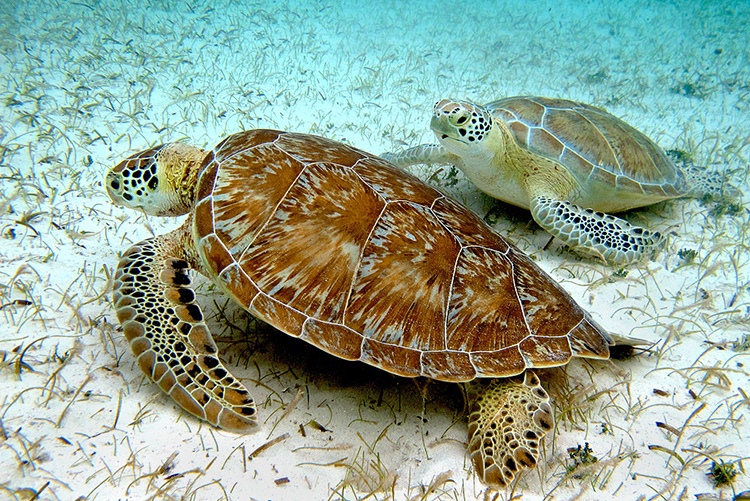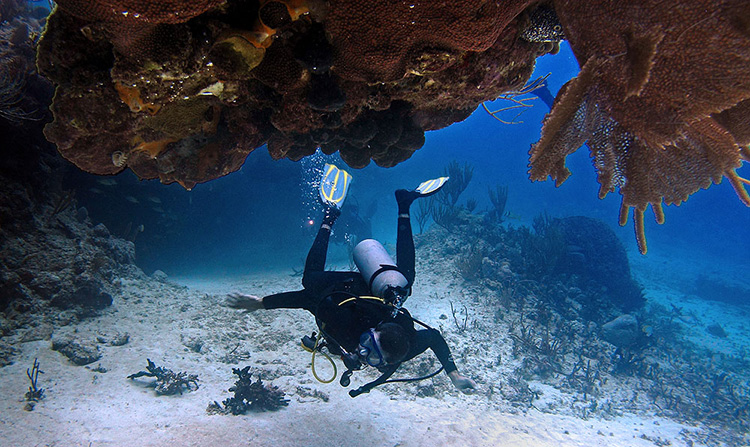Cozumel
It’s easy to see why Cousteau and the crew of Calypso were awestruck when they discovered the reefs of Cozumel in 1959. Drifting with the current along the walls of Palancar with the huge towering coral mounds and lush forests of sea fans and sponges, your senses are overwhelmed with the colors of a French Impressionist’s palette.
In addition to the diving, the Island of Cozumel is a great place for FUN! Mexico? Yes!!! But with all the modern conveniences: internet access, movie theaters, restaurants, bars and lots to do and see!! There is so much to see and do that even if you tried, you could not get bored here. The “other side” with its uncrowded beaches that stretch out for miles is a great place for solitude, or for one of our no-holds-barred party nights!! Looking to help? Join the locals for a beach clean-up or help the conservation society protect and guard the turtle nests, and when hatched help to make sure the turtles make it to the water!




The Mesoamerican reef is unique in the Western Hemisphere not only for its size but also because of its biodiversity. It is home to more than 65 species of hard coral and more than 500 species of fish, including the mammoth whale shark – the largest fish in the world. An ancient natural system, the reef is more than 225 million years old and functions as a natural barrier to storms and hurricanes. Much like the rainforests, the reef systems are crucial links to all plant and animal life on earth. The Cozumel reef systems located off the western coast of the island have been preserved since July of 1996 by the Cozumel Reefs National Marine Park. With an area of over 29,000 acres the Cozumel Marine Park includes the federal maritime zone, as well as rocky and sandy beaches, mangroves and palm groves that support important biological communities. There are 26 types of corals, with over 100 subspecies, and 300 fish species, some endemic to the island like the famous Splendid Toadfish. Programs that protect Cozumel’s Loggerhead, Hawksbill, and Green turtles have significantly increased their population, and as a result can be seen frequently by divers. Daily Park monitoring activities ensure an accurate and current diagnosis of the state of the reef, and provide vital information for its preservation programs and scientific research. The reefs of Cozumel are part of the second largest reef system in the world. Covering nearly 115 million acres, the almost 700-mile-long Mesoamerican Reef stretches from the northern tip of the Yucatan Peninsula in Mexico all the way to the Bay Islands in Northern Honduras. The Mesoamerican reef is unique in the Western Hemisphere not only for its size but also because of its biodiversity. It is home to more than 65 species of hard coral and more than 500 species of fish, including the mammoth whale shark – the largest fish in the world. An ancient natural system, the reef is more than 225 million years old and functions as a natural barrier to storms and hurricanes. Much like the rainforests, the reef systems are crucial links to all plant and animal life on earth. |

